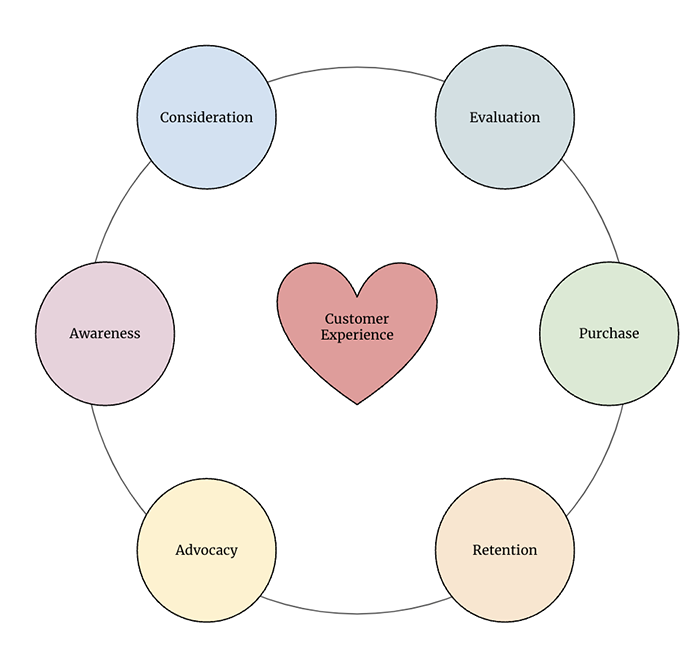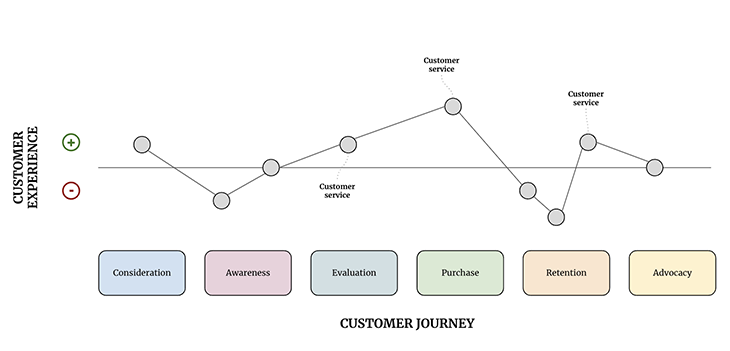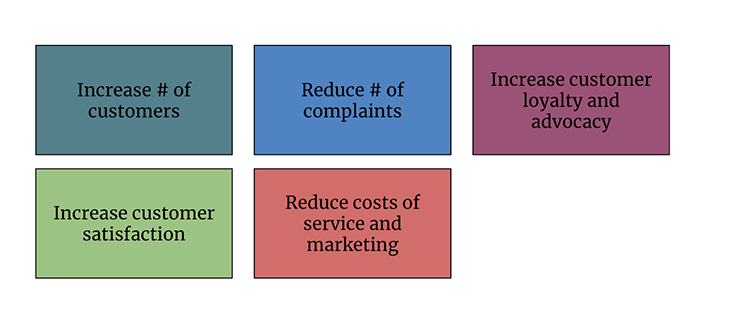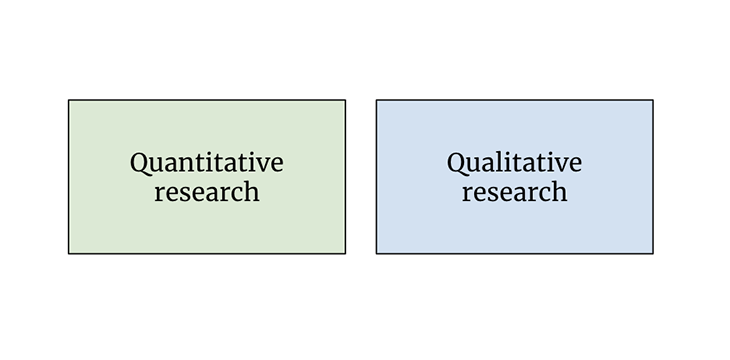As a kid growing up, I still remember the first pair of sneakers I bought with my own, hard-earned money. It took me some time to save up, bringing around advertisements in the village where I grew up. Yet, hard and enjoyable work pays off.
Which pair of sneakers was it, you ask? A fresh pair of Nike Air Tailwinds ’93 ‘White Dark Concord.’
Nike was and still is a brand that sticks with me for a few reasons. I can truly appreciate the creativity of legendary commercials such as basketball freestyle or the cage tournament.
There is the impressive design of the sneakers, the subtle touches, like the squeaky sound basketball sneakers purposely make, and the origin story of a sneaker type (yep, I am loving me some comics as well). There is also an overall consistency in service when interacting with Nike representatives, be it in-store employees or customer services teams.
That brings me to the topic of this article. To deliver a successful product, you have to be spot on in delivering an astonishing customer experience.
Want to learn more? Let’s just do it!
Table of contents
- What is customer experience?
- Customer experience vs. customer journey vs. customer service
- Why is the customer experience so important?
- Increased number of customers
- How to manage customer experience
- How to measure customer experience
- What does and does not make a great customer experience?
- How to collect, analyze, measure, and use customer experience insights
- The importance of customer experience to product managers
- Customer experience management tools
What is customer experience?
Customer experience, at a high level, can be defined as the perception a customer has when interacting with a product.
A more comprehensive description would be the holistic impression left on a customer through all interactions with the product.
This means that customer experience starts before the actual purchase, continues through the usage of the product, and covers the post-purchase phase as well.

Customer experience vs. customer journey vs. customer service
Some might consider it the holy trinity of customer satisfaction: the customer journey, customer experience, and customer service. Though each has some overlap, they should not be confused with one another.

Customer journey
The customer journey describes the touchpoints a customer has when interacting with your product. It shows the steps a customer takes and tells the story or path the customer takes.
The customer journey does not tell you anything about the perceptions and feelings the customer has at each step.
Customer experience
The customer experience showcases the perceptions and feelings the customer has at each step.
If you think about a road trip, the road trip is the journey, the car breaking down (who hasn’t been there?) is an experience on the journey. So are the beautiful mountains and a herd of deer in the forests you might pass by on your journey, that make you go “aww.”
Customer service
And then there is customer service. Customer service is a specific touchpoint in the customer journey, where your customer looks for and receives support or help. For instance, this is when the customer calls to understand how to buy a premium package.
Keeping the journey analogy going, when the car breaks down, customer service is the road services that come to the rescue and the service provided at a gas station when refilling the car.
Why is the customer experience so important?
Delivering an excellent customer experience is extremely essential to any product. The better the experience, the more repeat purchase, upsell, and advocacy of the product by the customer.
Additional key benefits of having an excellent CX include the following:

Increased number of customers
An exceptional customer experience increases worth-of-mouth and the overall perception customers will have about the product. This increases the change and easiness of moving them from evaluators to beginners in the product-led growth flywheel.
Reduced complaints
A happy customer is more likely to use your product more regularly. In addition, a happy company is likely to complain less, which could help decrease the investments needed in customer service.
Increased customer loyalty and advocacy
Those who like your product are likely to be more eager to explore the product in-depth, try other products or features being offered, and are not incentivized to try another product from a competitor.
These customers are also significantly more eager to proactively promote or even champion it. In both cases, it will increase customer lifetime value.
Moreover, the group will be more willing to be included in focus groups, interviews, and other customer insights-related qualitative research, to keep making the product that of what it needs to be.
Increased customer satisfaction
This one goes hand-in-hand with the previous two, with these groups being proven, happy customers. This ever-increasing group of customers will (initially) improve the customer satisfaction score (CSAT) significantly.
Reduced costs of service and marketing
The aforementioned presents an opportunity in itself. With the standard of what a great customer experience means to your customers, you will now know where to invest in service and marketing efforts, and where not to.
How to manage customer experience
Customer experience lives throughout the customer journey and evolves continuously, which might feel like a complex, chaotic, and uncontrollable thing to manage. Luckily, as with a lot of things, many have faced the same challenge and had to grind to find what works and what doesn’t.
Their best practices and learning through both failure and success have resulted in something that enables you to manage the customer experience.
What is customer experience management?
Customer experience management is all about understanding your customer’s journey, monitoring the emotions and feelings they have during each of the touchpoints, analyzing the information, and creating actionable follow-ups to consistently and continuously add more value to the customer’s experience. It is a rudimentary part of the customer-first and customer-experience strategy.
Building a strategy for managing customer experience
A customer experience strategy is a plan of action created to achieve the long-term overall customer experience goal.
The customer experience strategy helps product managers in the quest to solve pains for customers. It helps in understanding which solutions and features are needed to make the product what customers need it to be.
Here’s what the customer experience strategic process looks like:
- Start with creating your customer experience vision. Create one that acts as a guiding principle and can be communicated internally and externally. Creating the customer experience vision, like any vision, enables you to rally people and their behavior behind the common objective
- Now understand who your customers are. Who are they, what are their interests, and what does an average day in their life look like when interacting with the product? Create buyer and user personas for your target customers. Want to make it easy on yourself? Miro provides templates for both persona types. You can find the user persona template here, and the buyer persona template here
- Understand the customer journey. When, why, and how does the customer interact with your product? Miro has a nice template for customer journey mapping as well
- Create an emotional connection by understanding what customers are expecting from you. What is it that makes them want to use your product, instead of that of your competitors? What are the benefits and experiences you promise them?
- Define what, how, and how frequently to measure the customer experience throughout the customer journey
- Determine how customer feedback will be captured and analyzed, and how actionable items will be defined to improve the identified pain points
- Plan efficiency enhancement and improvements to better the customer experience, utilizing the actionable corrective item
- Measure the results, and refine, check, and adjust them ongoingly
How to measure customer experience
As shown, to make the customer experience strategy process work, you need to define what, how, and how frequently you measure the customer experience throughout the customer journey.
This raises some questions.
What does and does not make a great customer experience?
Answering this fundamental question allows you to define what to measure. Now unfortunately there is no universal answer, unlike the answer to life (the answer is 42), that guarantees customer experience success.
Why? Well, because your product is operating in a unique market with its specific customer group. Luckily, there are commonalities. In general, customer experience efforts focus on five categories:
- Marketing efforts and messaging
- The product
- The services provided
- The point of sale
- Customer service
To achieve a great customer experience in these categories, your customer expects you to:
- Provide a personalized and relevant experience
- Respond to and resolve issues promptly
- Make the experience seamless and effortless
- Provide a consistent and memorable experience
Just to give you a head start, and you might recognize some or all of them, five common experiences customers find extremely frustrating are:
- Long or no response times
- Issues that remain unresolved
- The missing human touch, as a result of (unreliable) automation
- The absence of personalized, tailored-to-individual needs services
- Rude and unqualified customer support
How to collect, analyze, measure, and use customer experience insights
You might be relieved here that collecting customer experience insights is not rocket science. It all boils down to being there where the customer needs you to be. Listen to what your customer perception is throughout their journey, what it is they like, and what it is that frustrates them.
Use online reviews, customer surveys, communities, customer experience intelligence tools, and other user research tools to gain these insights. There are several methods to listen to your customers, which can be broken down into qualitative and quantitative research.

Quantitative customer research
This is mainly used to explore and quantify the problem. In quantitative research, you gather large numbers of numerical data or data and translate these into usable statistics. Think about surveys, polls, and website/app monitoring.
Qualitative customer research
This is behavior-based and gathered by observation. It’s a direct form of research that focuses on understanding people’s perceptions, behaviors, emotions, and beliefs. This type of research is more time-consuming. Qualitative research examples are moderated usability tests, interviews, focus groups, and also user reviews.
To analyze the insights you need to understand what it is you want to analyze. Make sure to define and understand the metrics you are aiming to move the needle with the research. This will help you understand what type of data you need and which research form is most suitable to acquire the insight you need
The importance of customer experience to product managers
As a product manager, you are obsessed with making the product what the customer needs it to be. For you, it all starts with understanding your customers and what it is they need. Understanding and being able to improve the customer experience is what you live for.
The insights help you create your roadmap and influence your decision-making, be it for implementing new features, usability improvements, or giving priority to fixing bugs.
In addition, having the insights helps your stakeholder management efforts, as it is hard to argue with real insights provided by those that matter most. As James L. Barksdale said, “if we have data, let’s look at data. If all we have are opinions, let’s go with mine.”
Customer experience management tools
You might have guessed that there are tons of customer experience management tools out there that can support you, and each has its own unique benefits.
LogRocket focuses on digital experience analytics, providing a platform that empowers software teams to create the ideal web and mobile experiences. Its key features include session replay, error tracking, UX and product analytics, and frontend performance monitoring.
LogRocket also just released Galileo, a new machine learning layer that cuts through the noise of traditional error tracking and analytics tools so that teams can focus on their most important issues.
Conclusion
Customer experience is all about how the customer feels and perceives your product throughout their interactions with it.
A great customer experience can turn evaluators into beginning users, beginning users into regular users, and regular users into advocates of your product.
For the product manager, it is key to continuously gather and evaluate customer experience insights, and use them to improve the product and make customers fall in love with it.
Featured image source: IconScout
The post What is customer experience? Definition, examples, strategies appeared first on LogRocket Blog.
from LogRocket Blog https://ift.tt/WbxlXjr
Gain $200 in a week
via Read more



